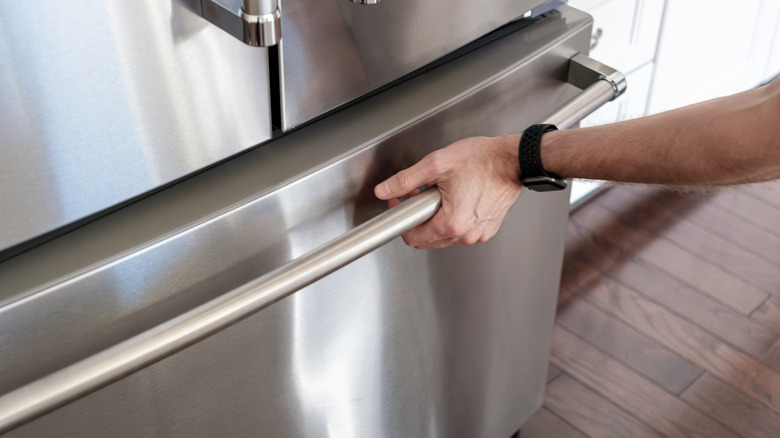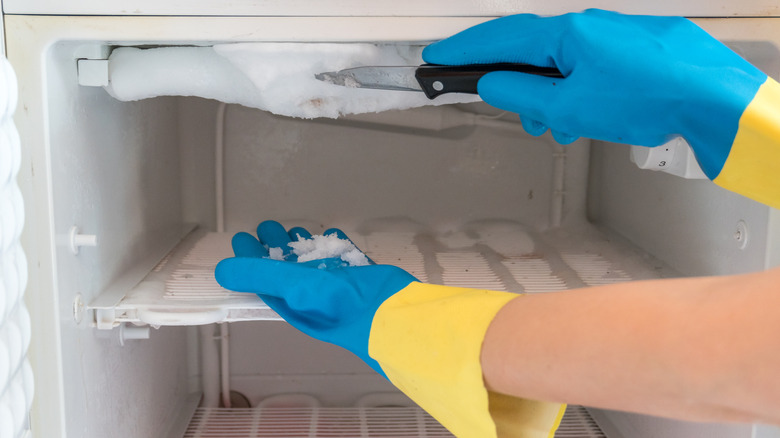Can Your Freezer Get Too Cold And What Happens When It Does?
Opening the freezer in search of a sweet treat and spotting a forgotten carton of ice cream hiding behind the frozen pizza is one of life's sweetest victories. Upon opening the carton, you may notice that your French Vanilla has a thin layer of freezer burn on top. You scrape it off and make yourself a bowl anyway because, yes, you actually can remove freezer burn from ice cream. But, now you're realizing that it's the third item this week that's been covered in freezer burn. While this can be a sign that your food isn't properly wrapped, it can also indicate that your freezer is too cold, which is a bigger problem.
When a freezer is too cold it can ruin food (aka freezer burn), drive up your electricity bill, and cause damage to the appliance as well. While the temperature danger zone is always important to consider when storing cold and frozen foods, the Food and Drug Administration recommends that you keep the freezer at 0 degrees Fahrenheit. There's no need to keep it any colder because this temperature will prevent harmful bacteria from growing. If the freezer is running lower than 0 degrees Fahrenheit, it's working in overdrive. That means an unnecessarily expensive electricity bill and a negative effect on the lifespan of the appliance.
How to tell if your freezer is too cold and how to fix it
You'll know your freezer is set too cold (or malfunctioning) when you start to notice more freezer burn than usual on food. A little bit of freezer burn is normal and perfectly safe to eat, but it can still negatively affect the taste and quality of the food. Another surefire sign that your freezer is too cold is the buildup of frost or ice clinging to the walls. This can be especially bad if the ice clogs the air vents, which help regulate the internal temperature. The freezer is supposed to be cold but not supposed to resemble the arctic tundra.
If you're noticing signs that your freezer is too cold, there's no need to panic quite yet. First and foremost, try adjusting the temperature. If it's set to anything below 0 degrees Fahrenheit, raise the dial until it's back to the recommended level. Next, check those air vents. There may be food blocking circulation or a layer of ice may have accumulated. Move the foods around to allow for better airflow or use a scraper to remove ice buildup. Try cleaning the condenser coils located at the back of the appliance, as dust buildup can also affect temperature regulation. If you're looking to minimize the chance of freezer burn on those hamburger patties and save a little money on the electricity bill, double-check your freezer temperature and avoid inviting any snowmen.

